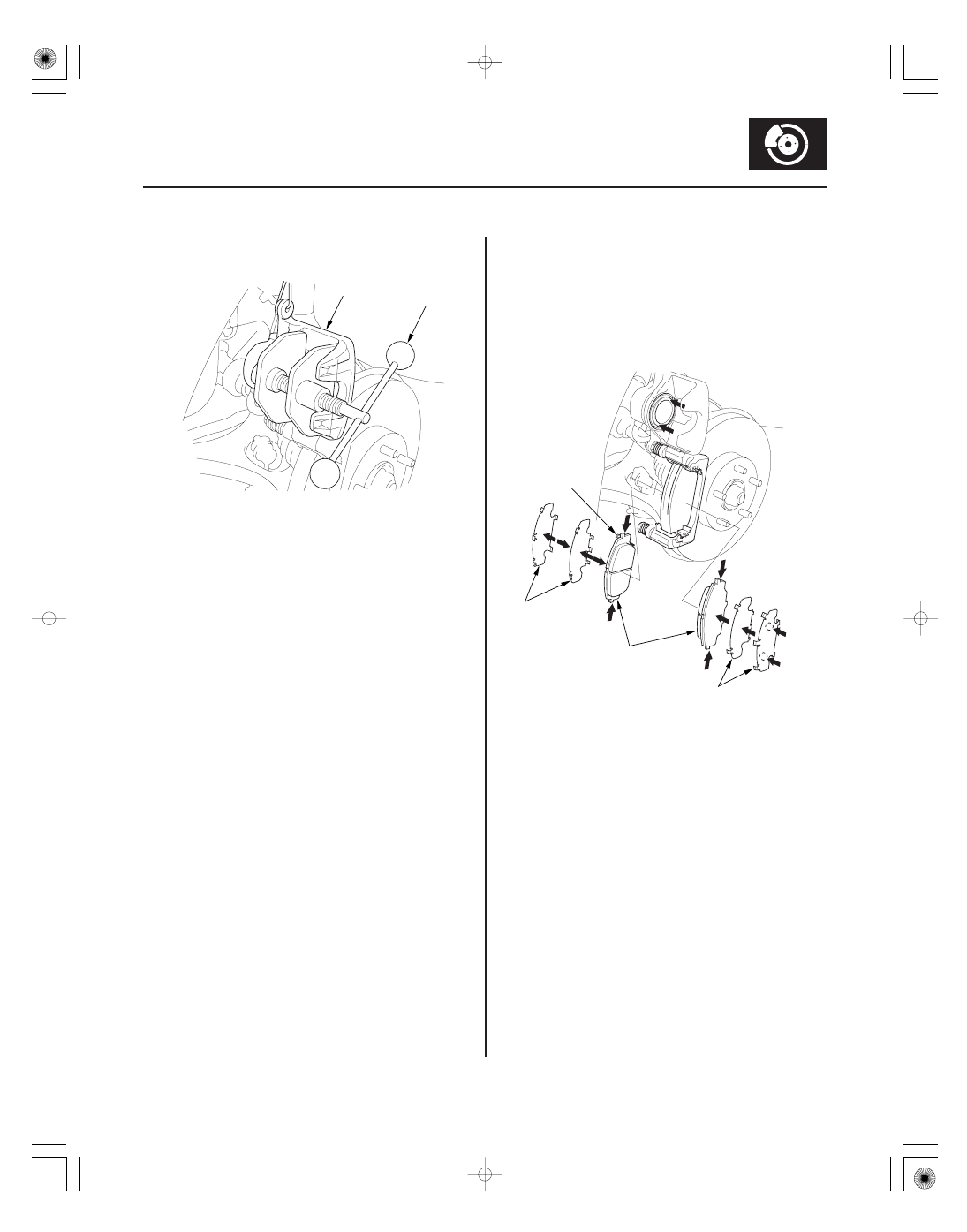Acura CSX. Manual - part 378

07
06
19-17
A
07AAE-SEPA101
B
A
B
A
C
11. Install the brake caliper piston compressor tool (A)
on the caliper body (B).
12. Press in the piston with the brake caliper piston
compressor tool so the caliper will fit over the
brake pads. Make sure the piston boot is in position
to prevent damaging it when pivoting the caliper
down.
NOTE: Be careful when pressing in the piston;
brake fluid might overflow from the master
cylinder’s reservoir. If brake fluid gets on any
painted surface, wash it off immediately with water.
13. Remove the brake caliper piston compressor tool.
14. Apply a thin coat of M-77 assembly paste (P/N
08798-9010) to the pad side of the shims (A), the
back of the brake pads (B) and the other areas
indicated by the arrows. Wipe excess assembly
paste off the pad shims and the brake pads friction
material. Keep grease and assembly paste off the
brake disc and the brake pads. Contaminated brake
disc or brake pads reduce stopping ability.
15. Install the brake pads and the pad shims correctly.
Install the brake pad with the wear indicator (C) on
the upper inside. If you are reusing the brake pads,
always reinstall the brake pads in their original
positions to prevent a momentary loss of braking
efficiency.
08/08/21 15:00:56 61SNR030_190_0017